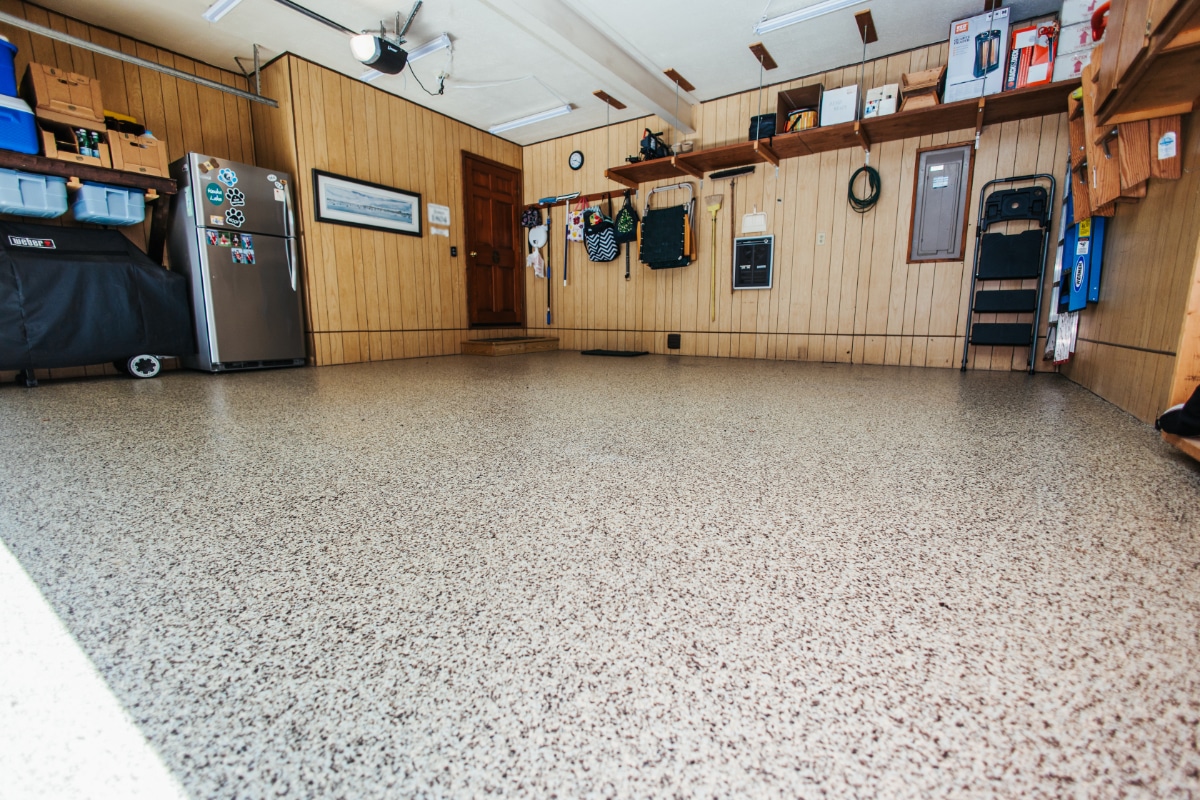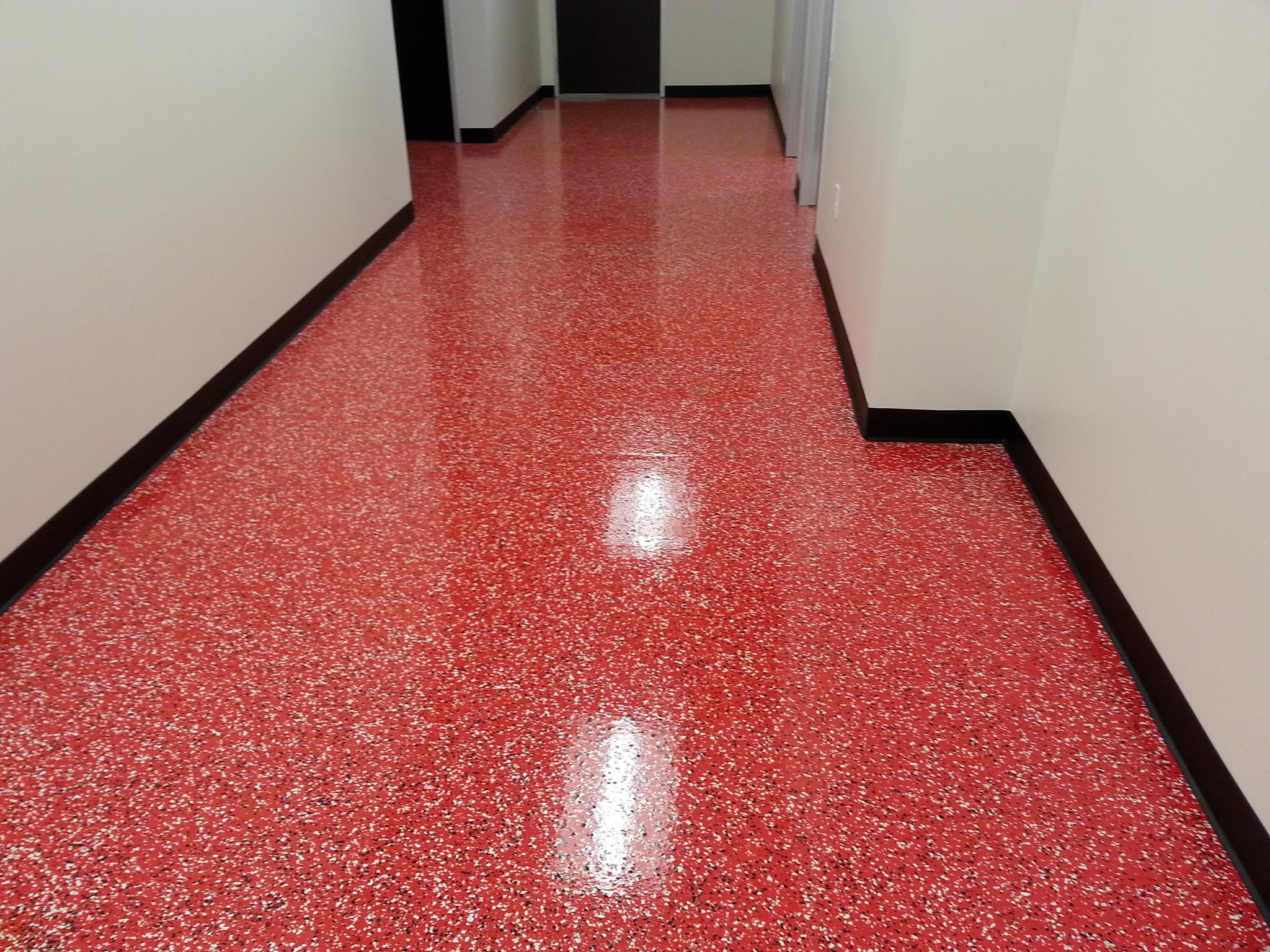Picture this: You’re pulling your car into your garage after a long day, and your eyes are drawn to the chipped, stained, and dusty concrete floor. You imagine evenings spent tinkering with projects on a surface that’s both sturdy and stylish. This is the beauty of garage floor epoxy – a transformation that can elevate your garage from a neglected space to a functional and visually appealing area for your hobbies, storage, or simply a place to unwind.

Image: everlastconcretefloor.com
But how much does this dream actually cost? There’s a lot to consider when it comes to epoxy floor pricing, from the size of your garage to the specific type of epoxy you choose. This article is your comprehensive guide to understanding the cost of having your garage floor epoxy installed, so you can make an informed decision that fits your budget and needs.
Breaking Down the Costs: A Deep Dive into Epoxy Flooring
The cost to epoxy a garage floor isn’t a one-size-fits-all answer. It’s like buying a car—you’ll get different pricing depending on the model, features, and upgrades you choose. Here’s a breakdown of the factors that influence the final cost:
1. Garage Size: The Bigger the Garage, the Bigger the Cost
Naturally, the larger your garage, the more epoxy you’ll need. The average garage measures around 200 square feet, but if you have a larger space, that can significantly increase the overall cost. In general, epoxy installers charge per square foot, so you can estimate the cost by multiplying the square footage of your garage by the average price per square foot in your area.
2. Epoxy Type: From Basic to Premium
Just like car models come in different trims, epoxy comes in various formulations with distinct properties and cost implications. Here’s a breakdown of some common types:
- Standard Epoxy: This is the most basic and affordable option. It’s durable, moisture-resistant, and easy to clean, but it might not offer the visual appeal of other options.
- Epoxy Flakes: This option adds a layer of decorative flakes to the epoxy, creating a unique and attractive finish. Flakes come in various colors and textures, giving you ample creative freedom.
- Polyurea: For superior strength and durability, polyurea epoxy is known for its high resistance to abrasion, chemicals, and impact. It’s a more expensive option but ideal for high-traffic areas or spaces with heavy machinery.
- Epoxy with Quartz: A blend of epoxy and quartz particles creates a non-slip, durable surface. It’s often chosen for garage floors that require extra traction.

Image: www.phoenixpaintservices.com
3. Preparation and Surface Conditions: A Foundation for a Strong Finish
A smooth and clean surface is crucial for long-lasting epoxy results. The preparation process involves cleaning, patching cracks, and smoothing out any imperfections in the concrete. Extensive repairs, such as leveling uneven areas, can add to the overall cost. If your garage floor is in poor condition, factor in some additional costs for preparation.
4. Labor Costs: Skilled Hands Bring Expertise
Labor costs can vary depending on the experience and location of the installer. You might find cheaper labor rates in certain regions, but remember that expertise is essential for long-lasting results. Take the time to research reputable installers in your area and get quotes from several companies before making a decision.
5. Additional Features: Enhancing the Look and Function
Think of these as the “options” when purchasing a car. They can add extra functionality and aesthetics to your garage floor, but they also come with an additional cost.
- Color: You can choose from a wide range of colors to personalize your garage floor. Custom colors might cost a bit extra compared to standard options.
- Metallic Epoxy: For a more luxurious look, metallic epoxy creates a captivating shimmering effect.
- UV Protection: If your garage gets a lot of sunlight, consider adding a UV protection coating to prevent fading and discoloration.
- Non-Slip Additives: If you want extra traction, especially in wet conditions, look into epoxy with non-slip additives.
- Lines and Designs: If you want to create specific patterns or lines, such as parking spaces or walkways, factor in the additional costs for custom designs.
Expert Insights and Actionable Tips for Your Epoxy Project
So, you’re ready to bring your garage floor dreams to life. Here are some tips from seasoned epoxy installers:
- Get Multiple Quotes: Don’t settle for the first price you see. Get quotes from several reputable installers to compare prices and service offerings.
- Ask About Warranties: Reputable installers typically offer warranties on their work. Inquire about the warranty terms and what they cover.
- Factor in Additional Costs: Remember to factor in prep work, repairs, and any additional features you might want. A well-prepared budget will prevent surprises later on.
- Consider Your Use: What will you primarily use your garage for? If you plan on storing heavy equipment or using it as a workshop, choosing a durable epoxy type is essential.
Cost To Have Garage Floor Epoxy Installed
Conclusion: Your Garage, Your Style
Transforming your garage floor with epoxy can be an investment that enhances its functionality, aesthetics, and value. By understanding the influencing factors and planning your project carefully, you can find the right epoxy solution to meet your budget and needs. Remember, you’re not just purchasing a floor; you’re investing in a space that reflects your style, practicality, and personal vision.





